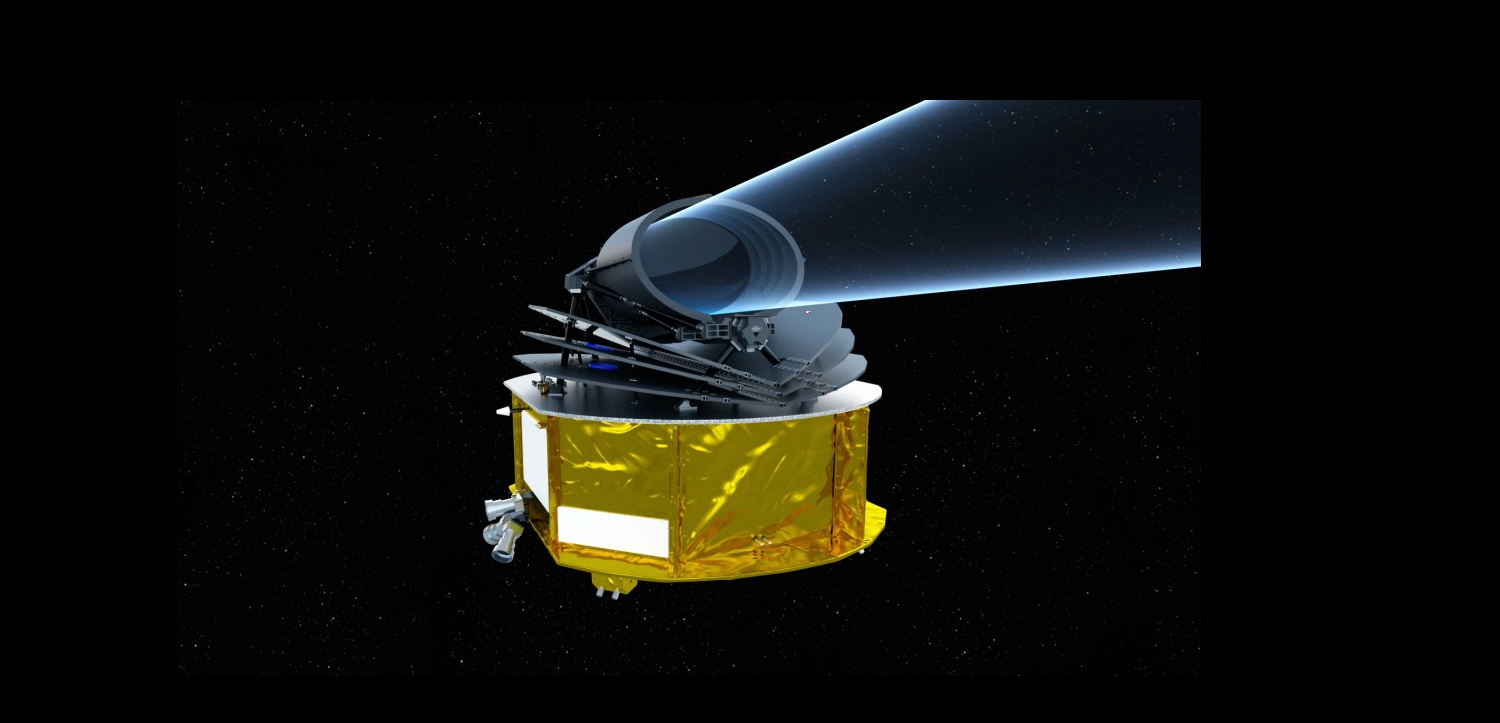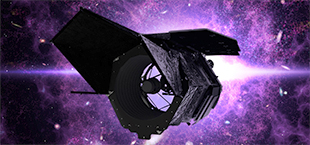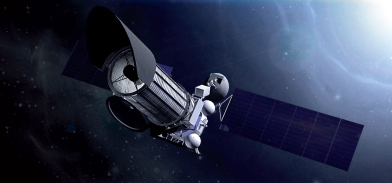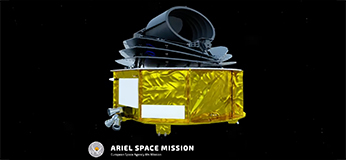The Atmospheric Remote-sensing Infrared Exoplanet Large-survey (Ariel) is a space telescope mission dedicated to atmospheric spectroscopy of extrasolar planets led by the European Space Agency (ESA).
Ariel will target about 1000 exoplanets that transit their star, crossing in front of the star’s face as seen from Earth. During exoplanet transits, Ariel will measure the spectra of the light that passes through the planet’s atmosphere to reveal compositional details.
For these observations, Ariel carries a telescope with a 1.1 m × 0.7 m elliptical primary mirror and observes in the wavelength range 0.5 - 7.8 μm (visible and infrared).
Ariel is scheduled to be launched in 2029 and wil travel to the Sun-Earth Lagrange point 2 (L2).
The Japan team will contribute to Arial through the development of optical elements for the Ariel Infra-Red Spectrometer (AIRS), as well as science such as modeling of exoplanet atmospheres, and ground-based observations.
(Image Credit: ESA/STFC RAL Space/UCL/UK Space Agency/ ATG Medialab)
Facts and Figures (* Source : Ariel Space Mission)
| Elliptical primary mirror | 1.1 x 0.7 metres |
|---|---|
| Mission lifetime | at least 4 years in orbit |
| Payload mass / launch mass | ~500 kg / ~ 1500kg |
| Instrumentation | 3 photometric channels and 3 spectrometers covering continuously from 0.5 to 7.8 microns in wavelength |
| Launch date | 2029 |
| Destination | Sun – Earth Lagrange Point 2 (L2) |
| Launch vehicle | Ariane 6-2. Launch shared with Comet Interceptor |




